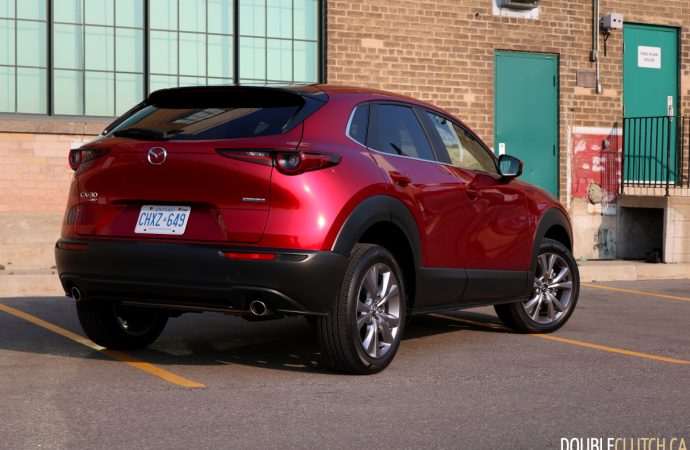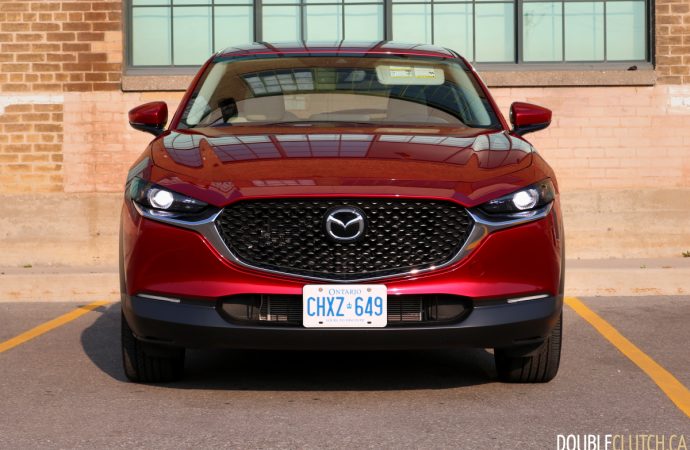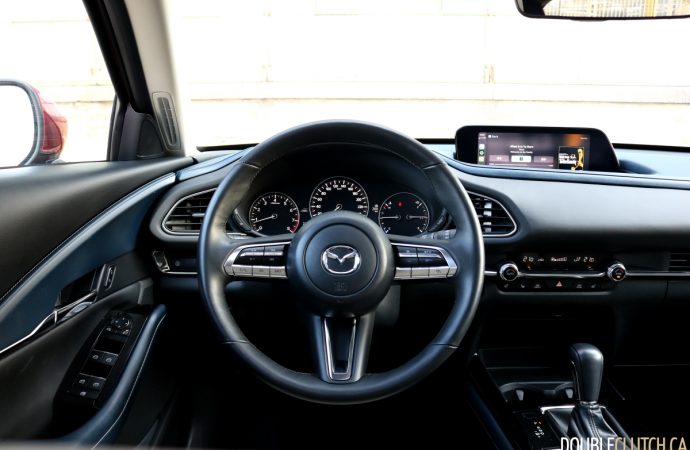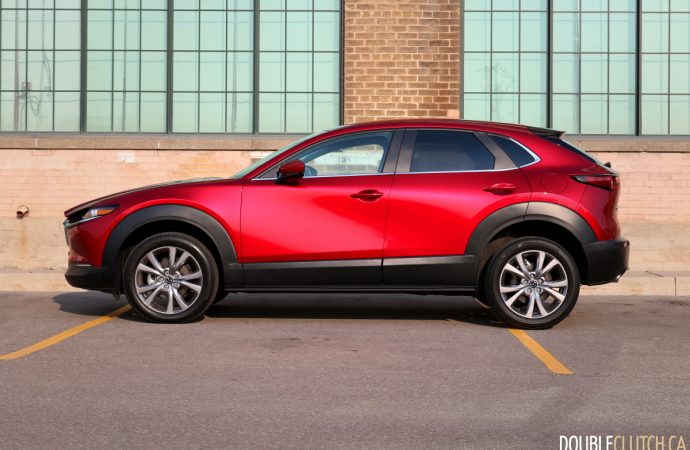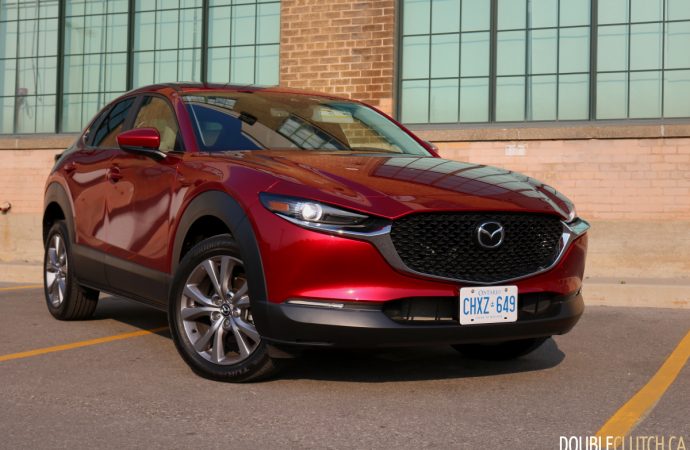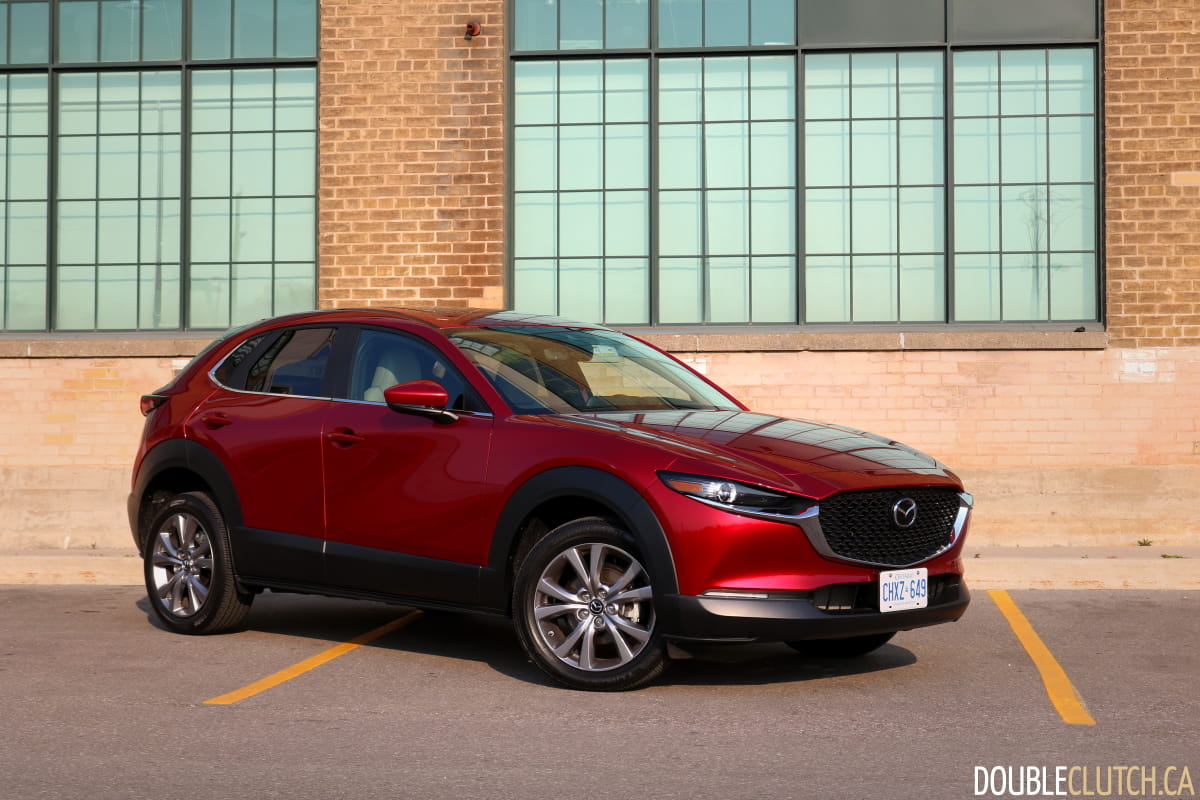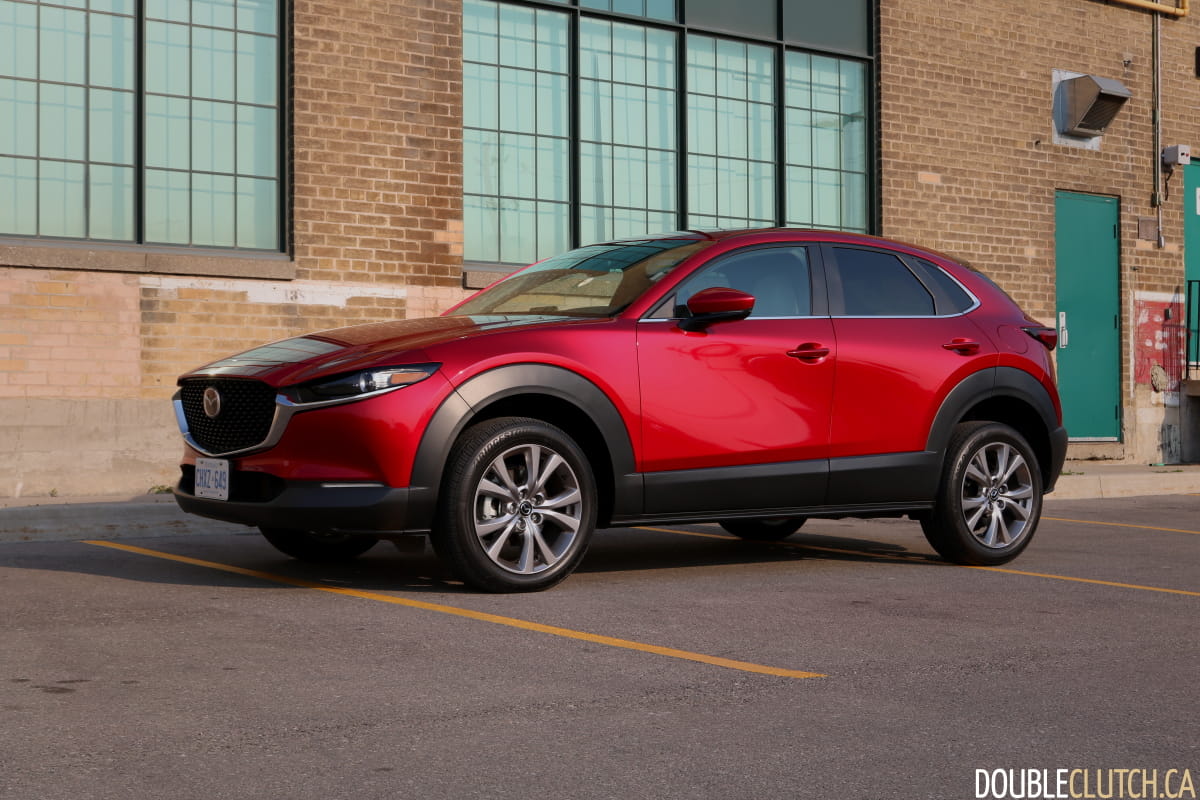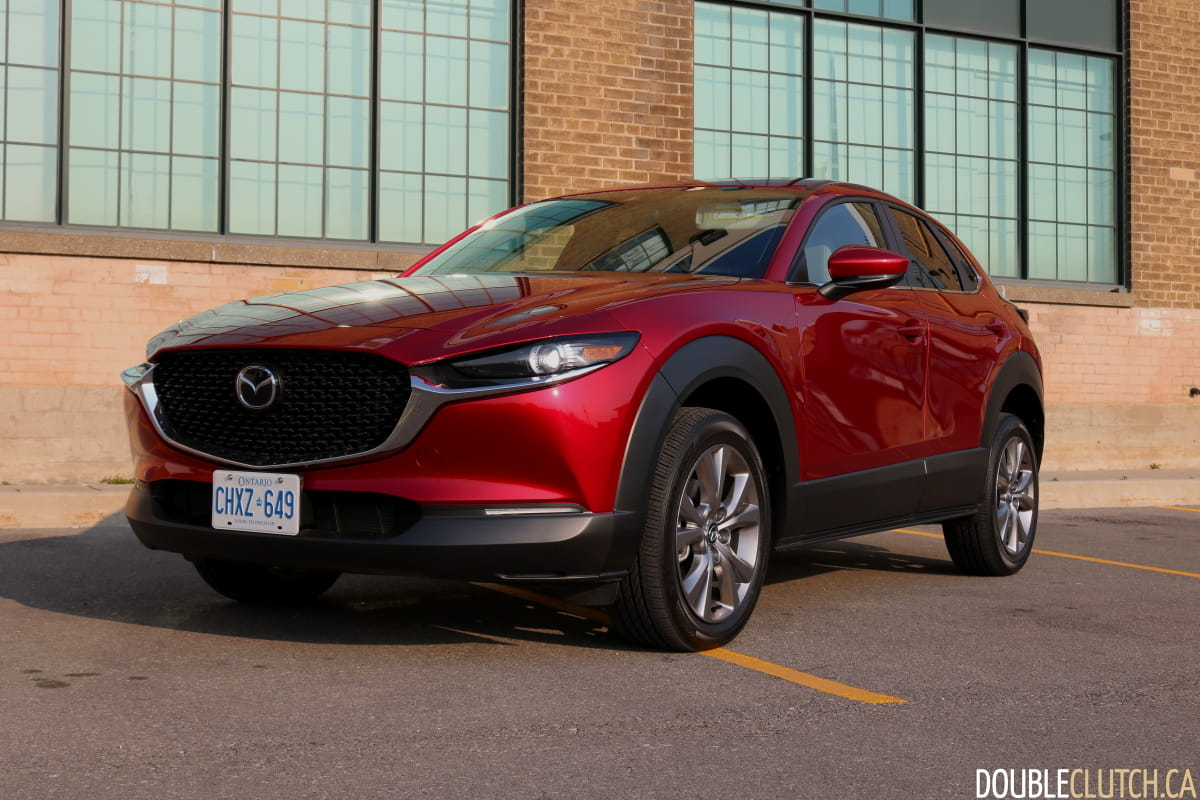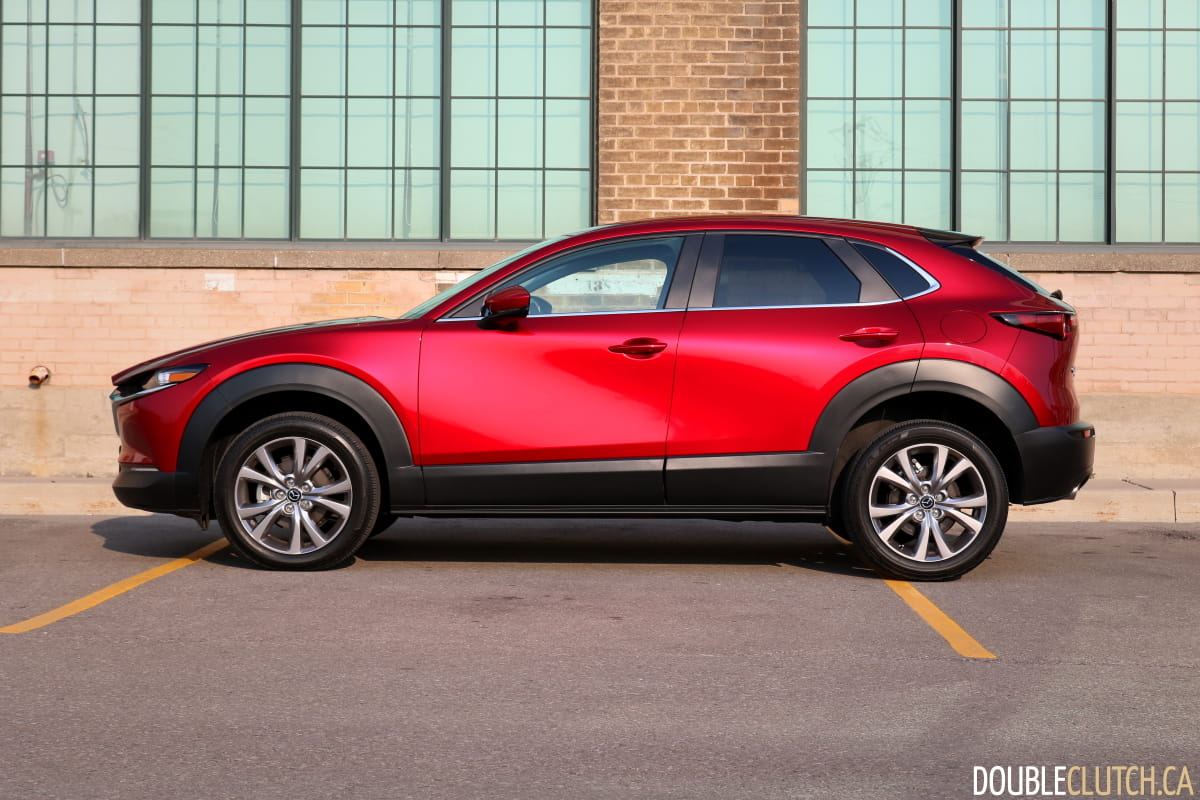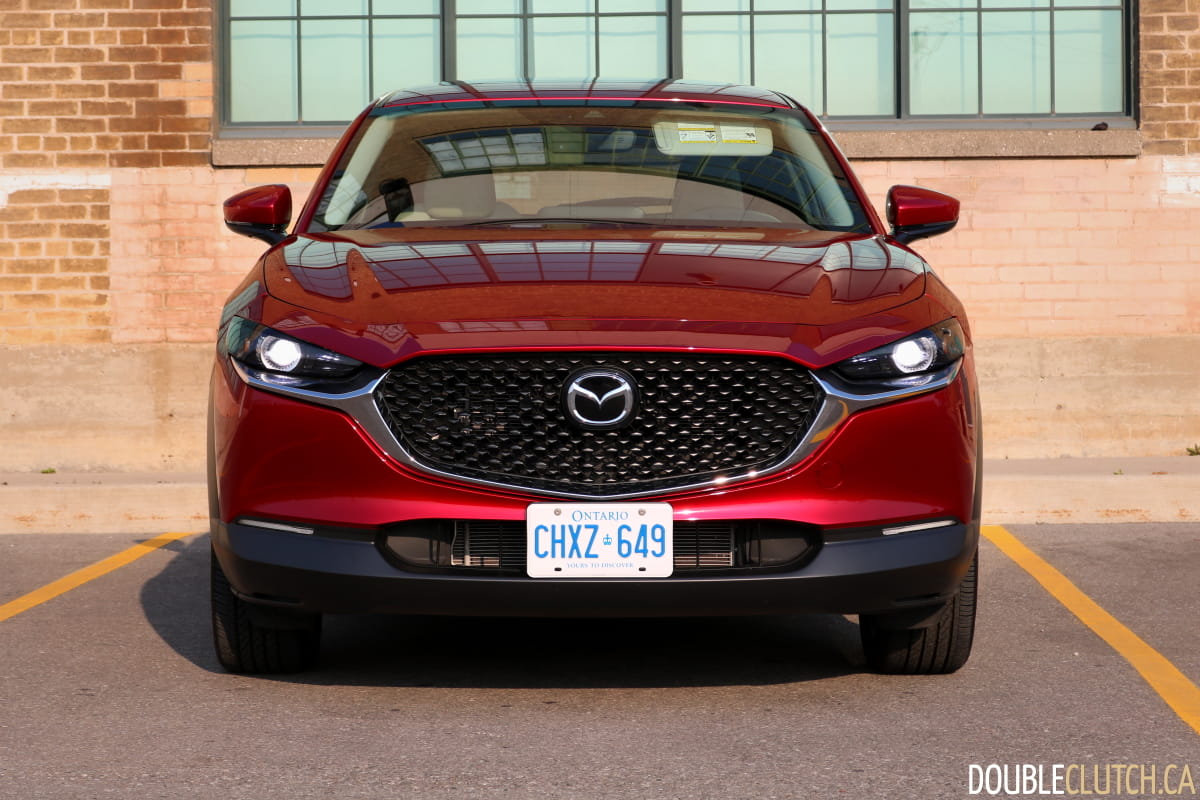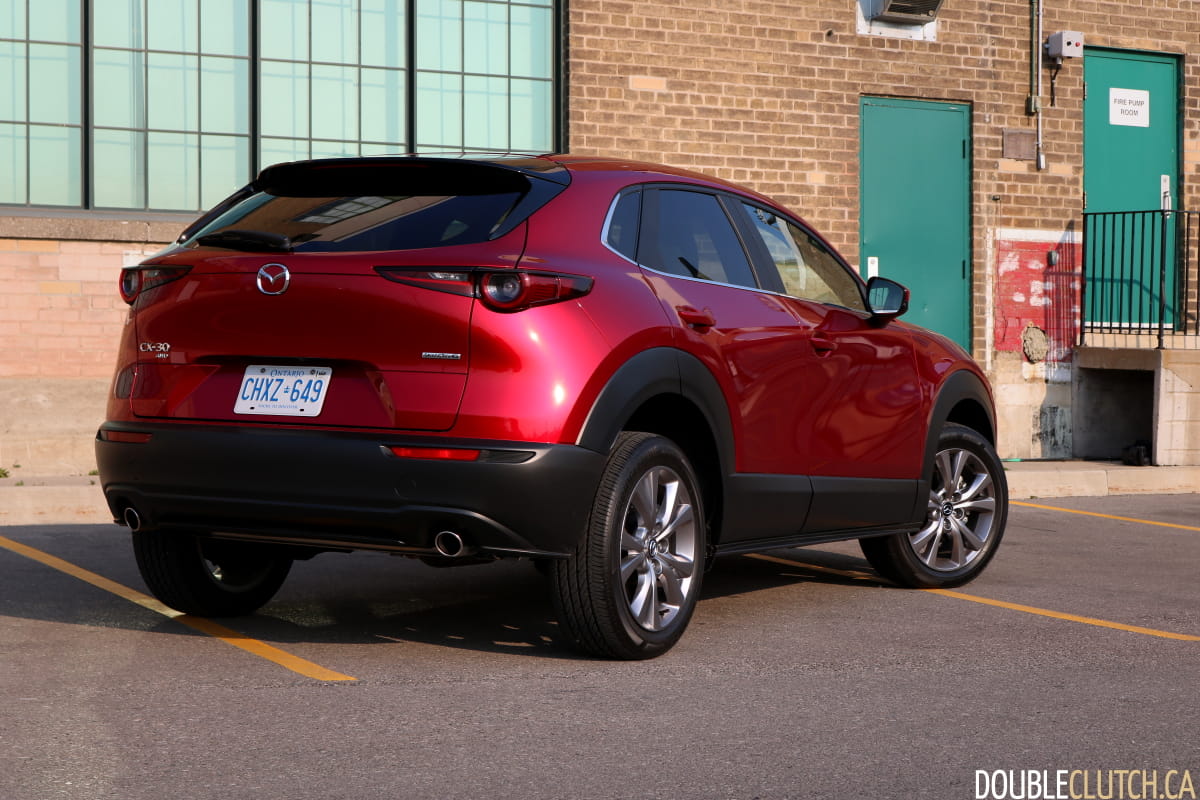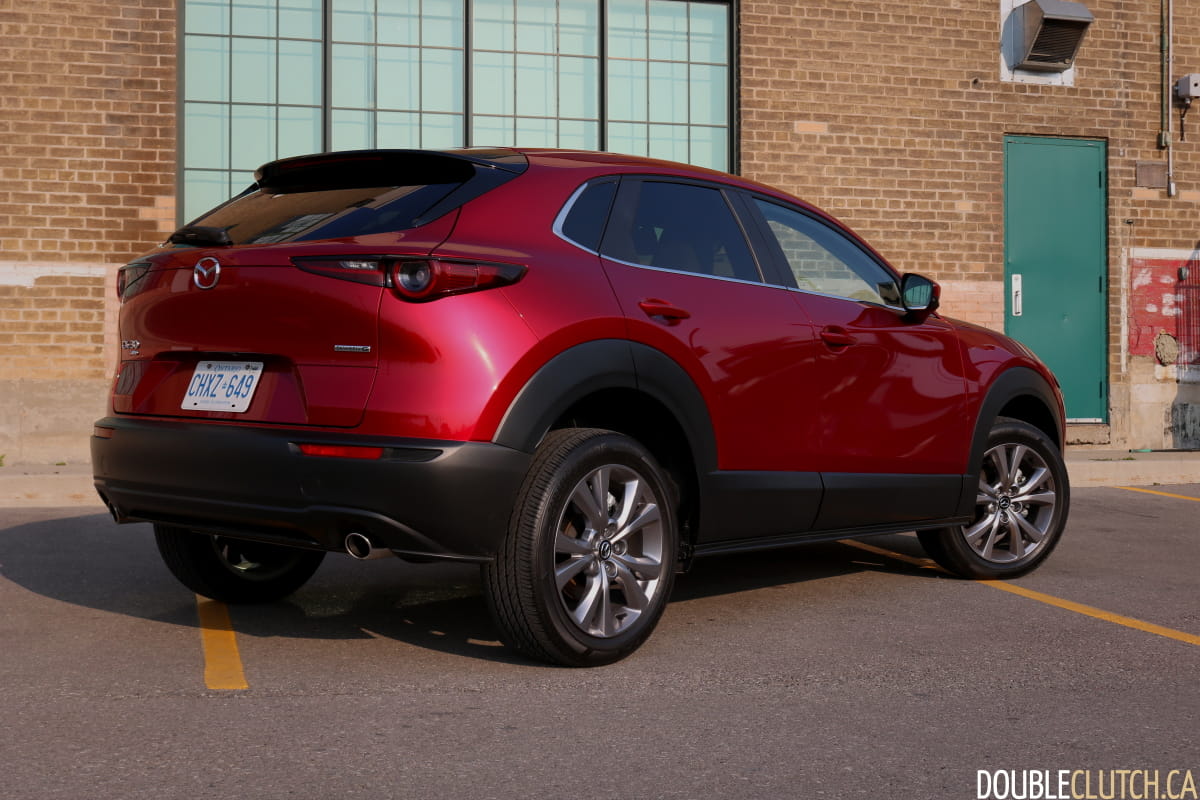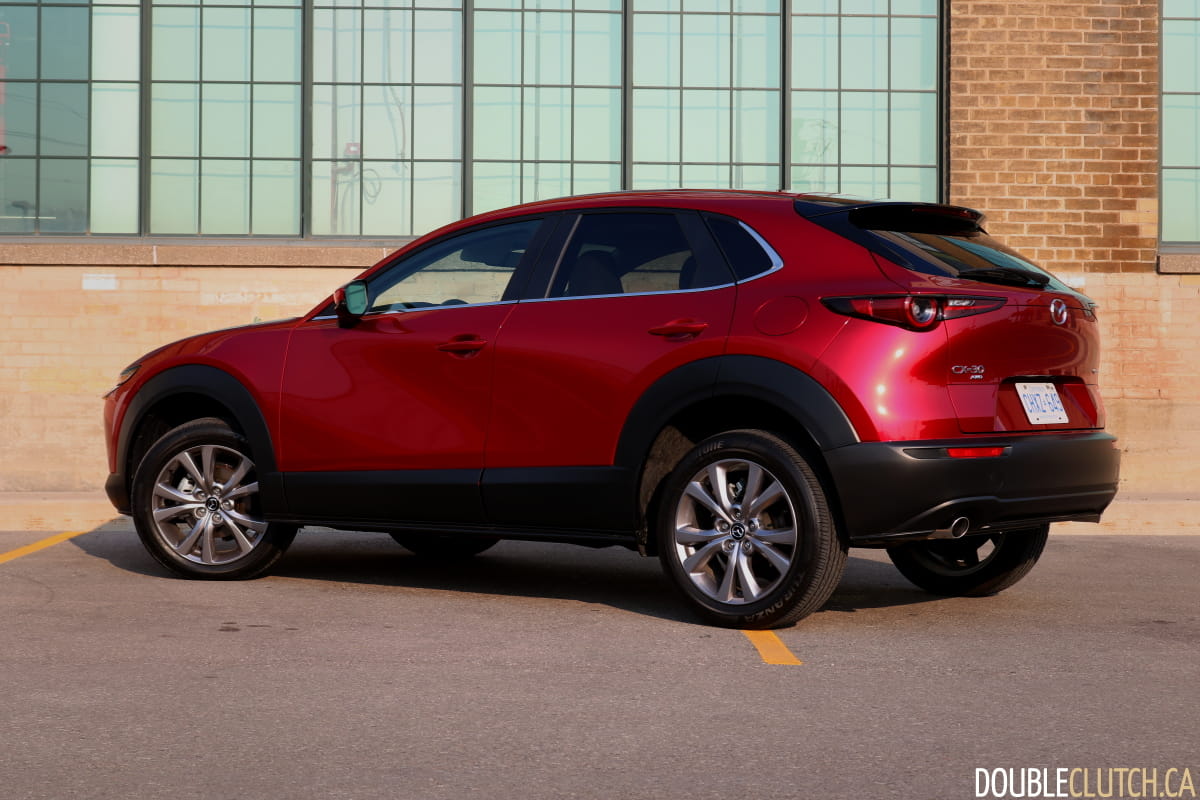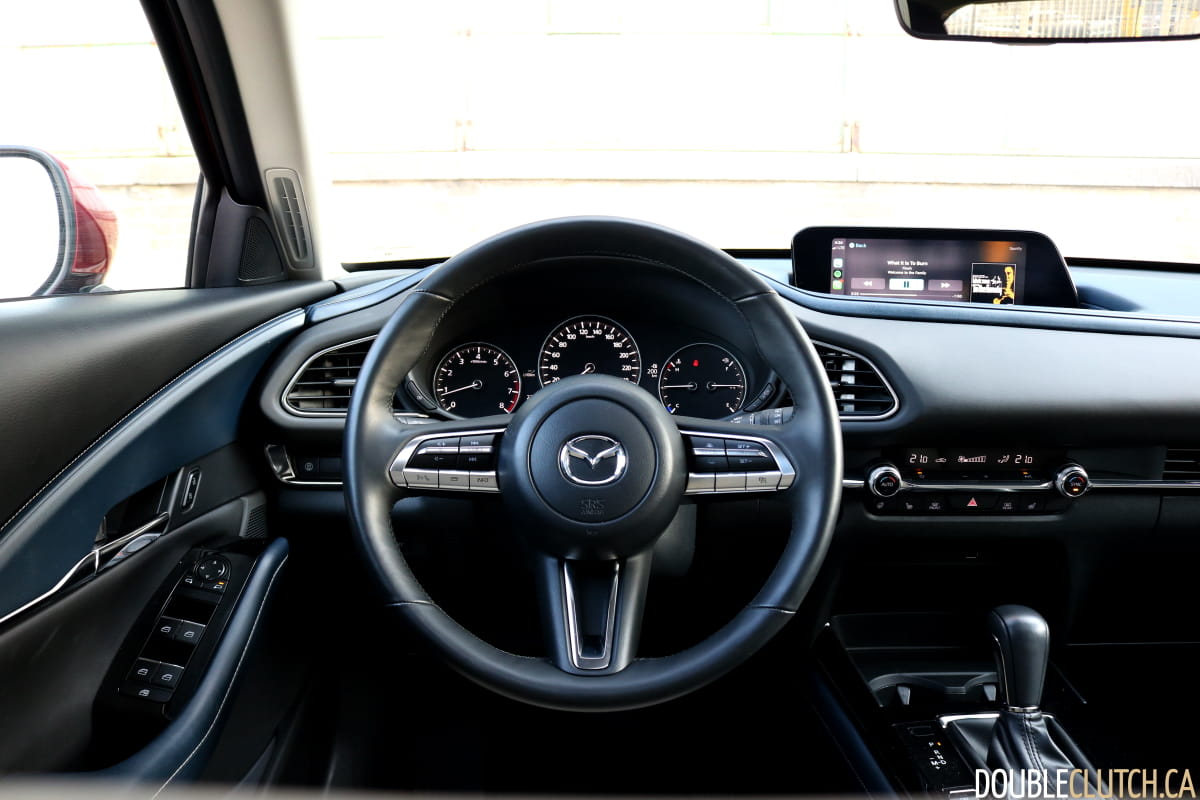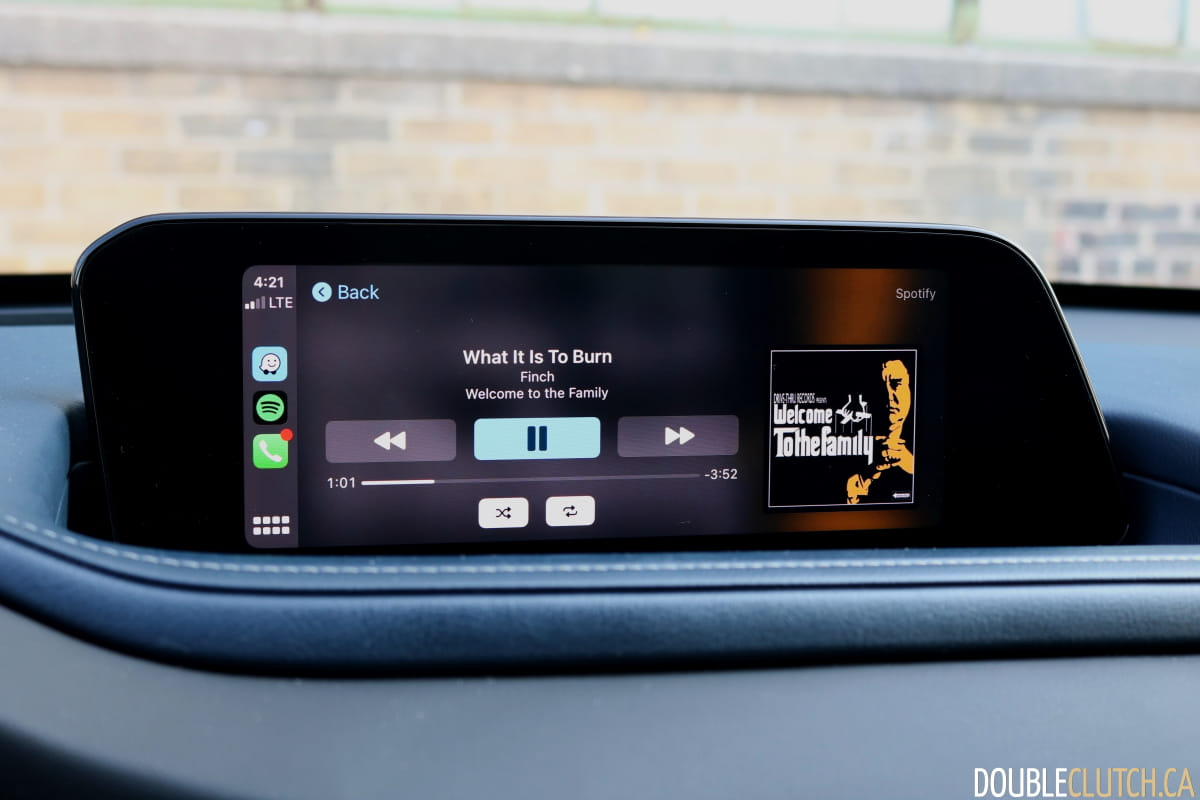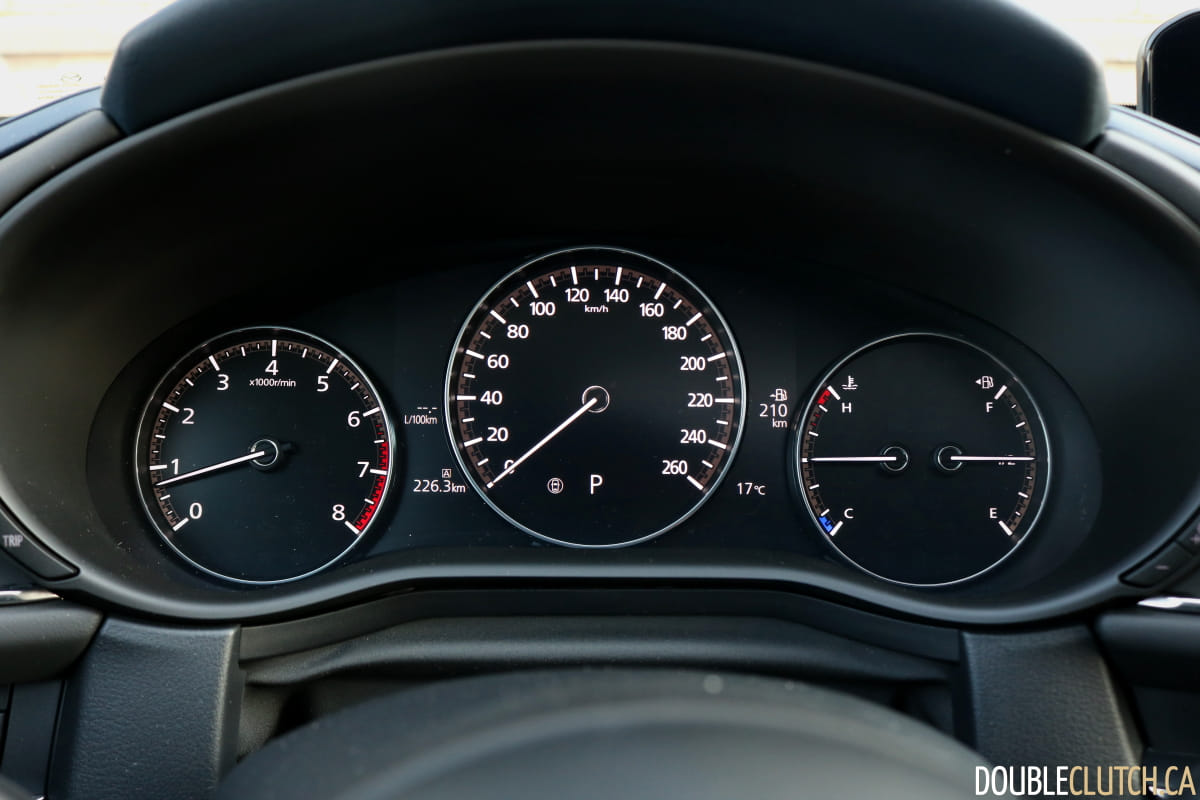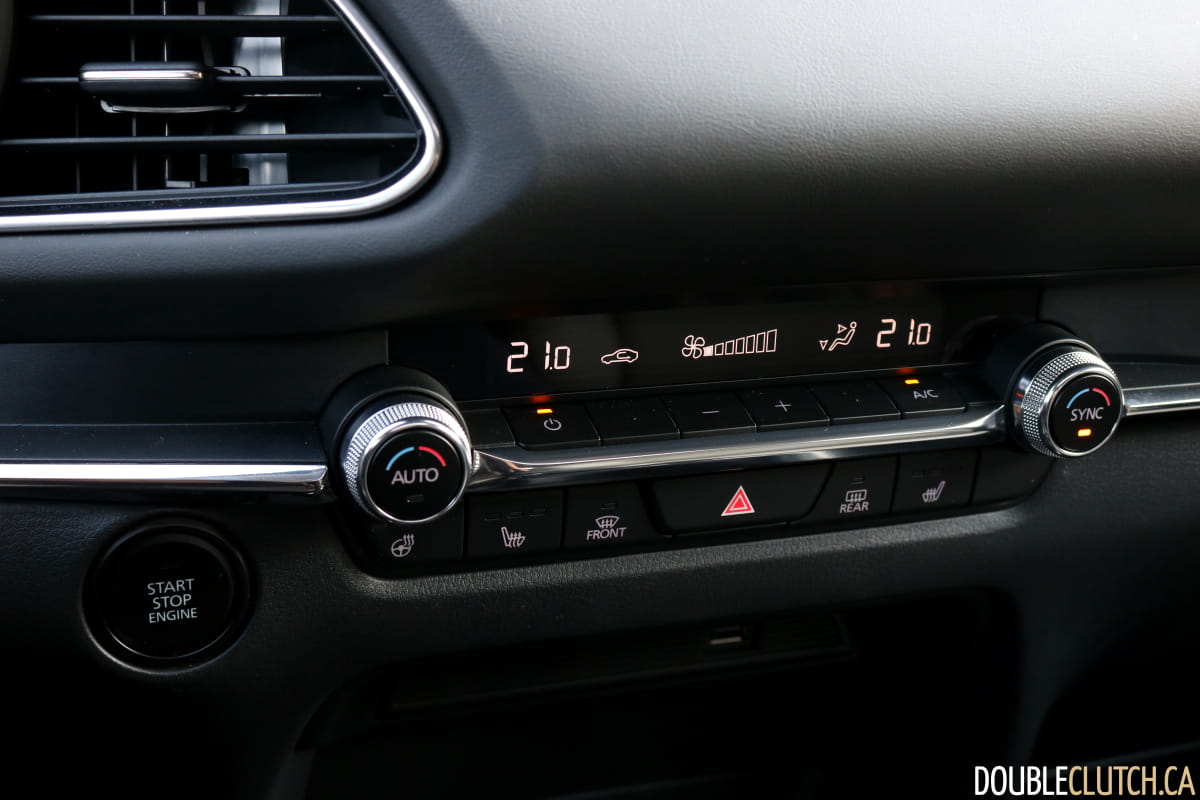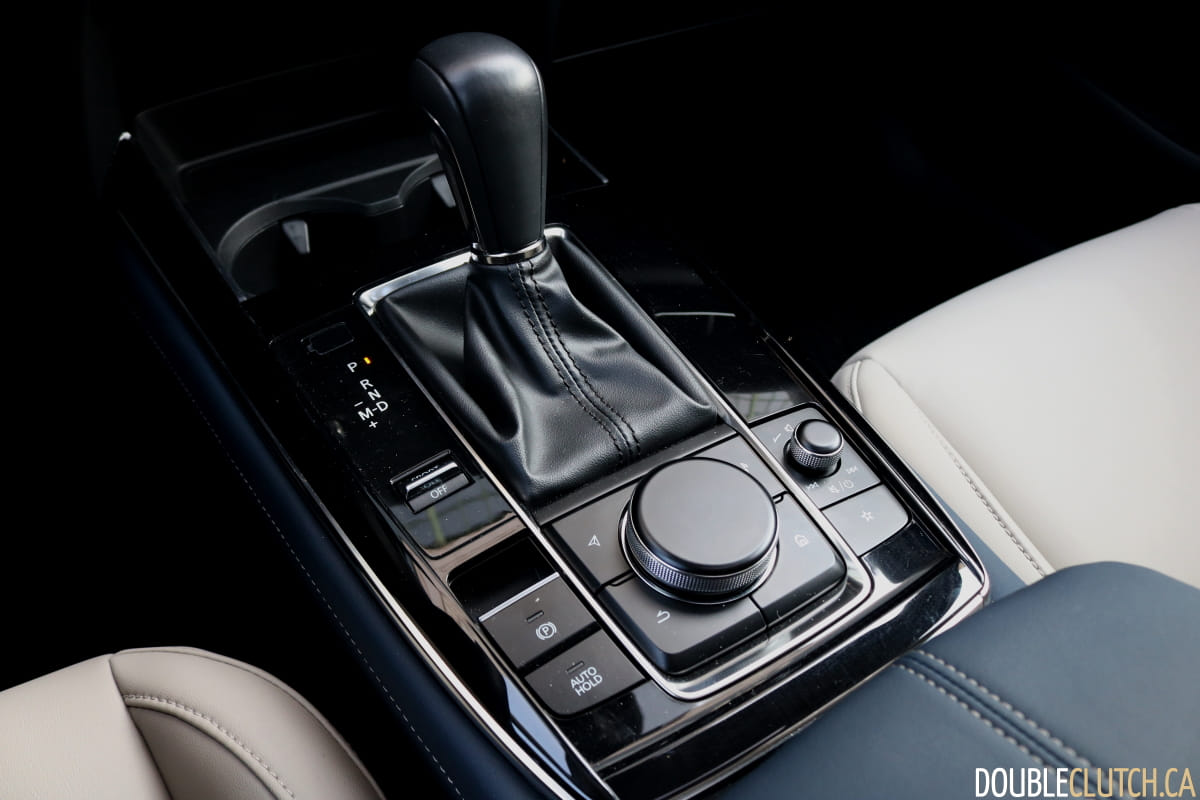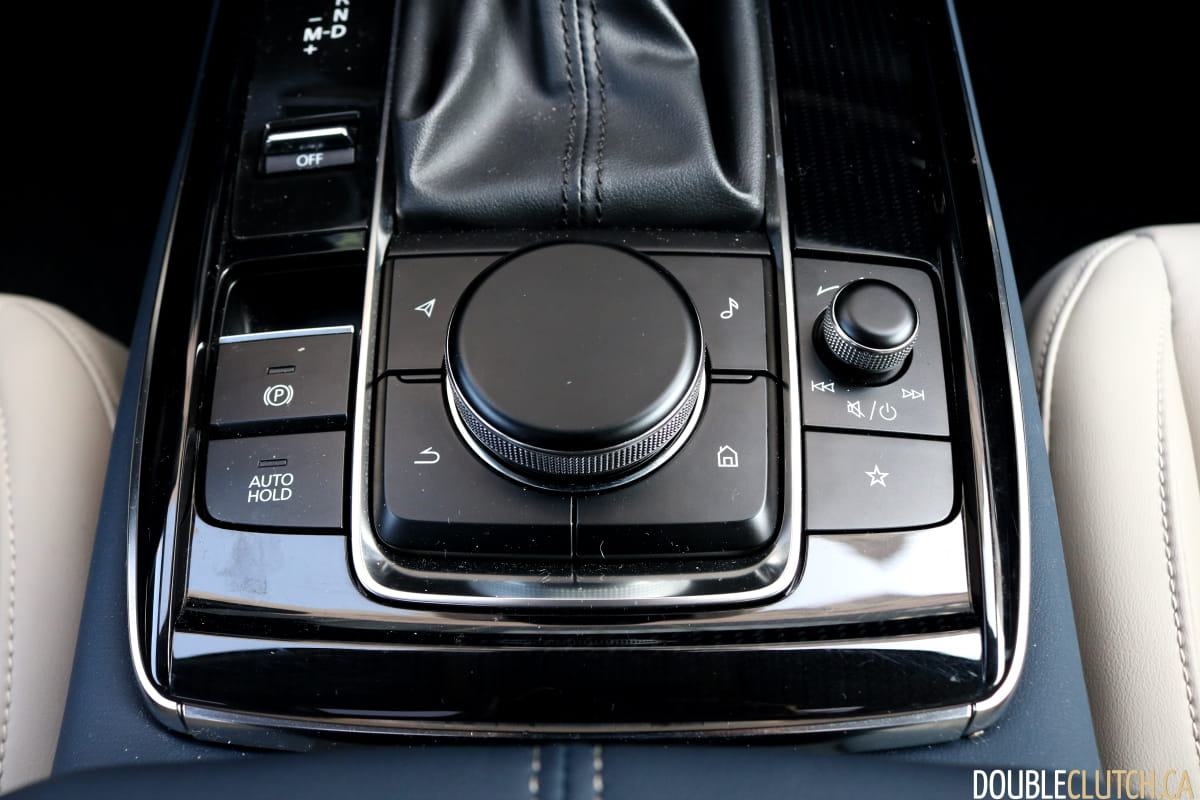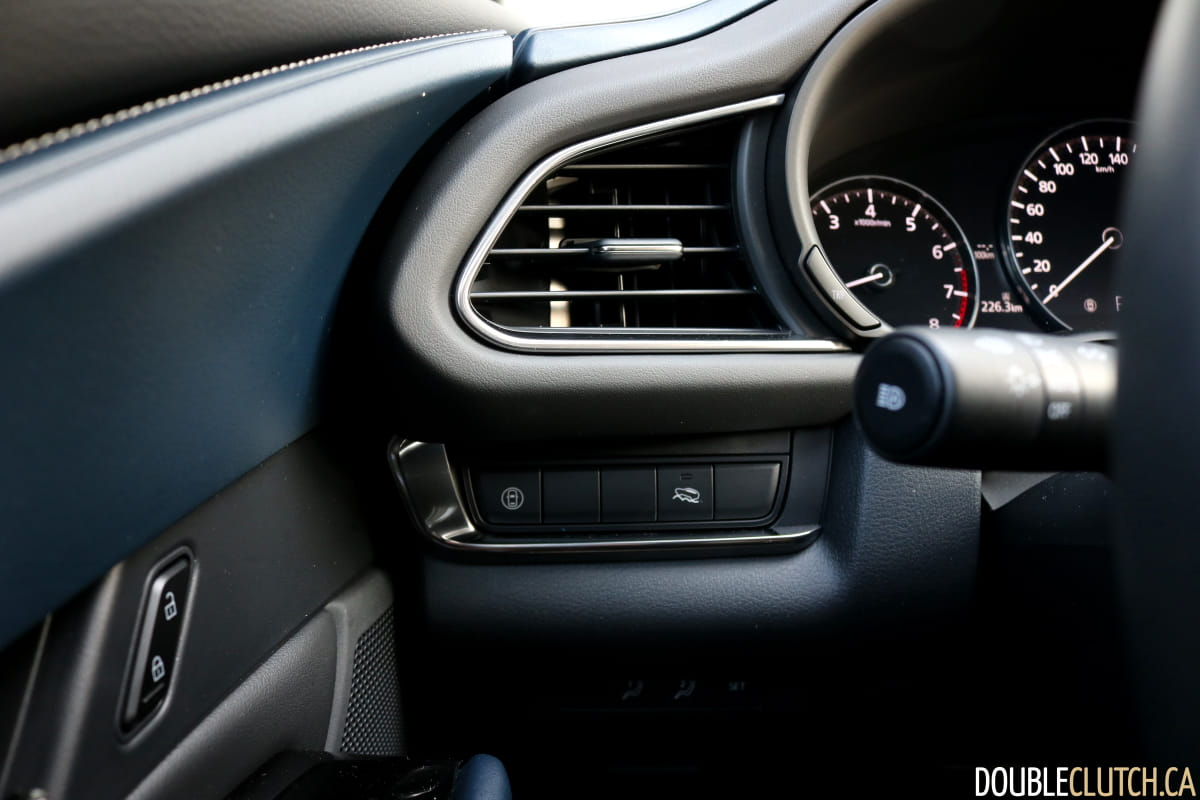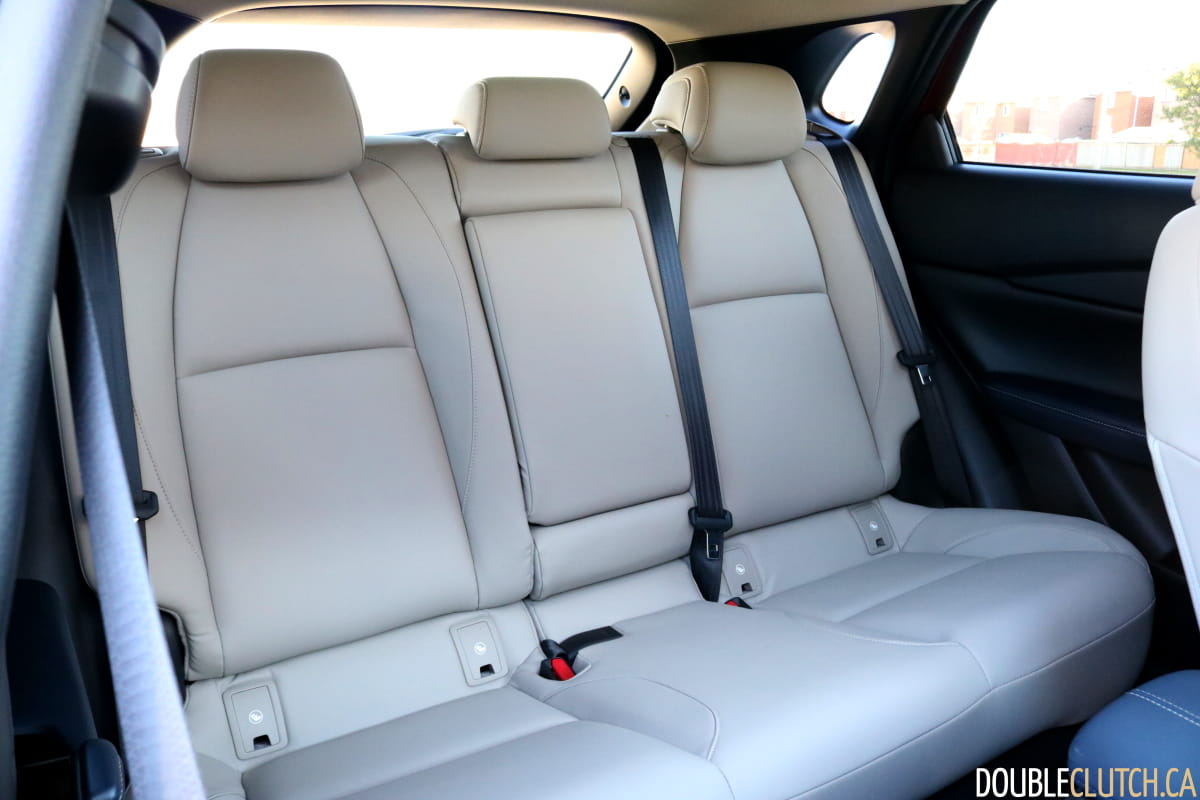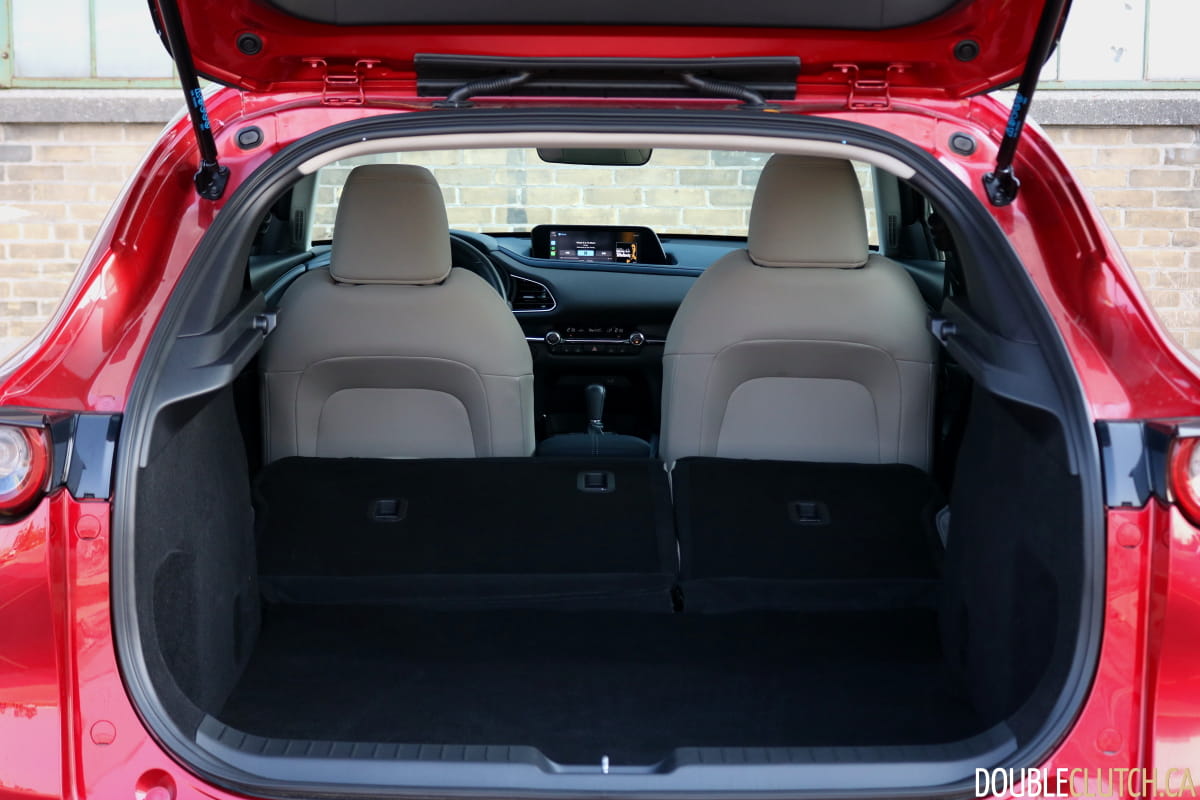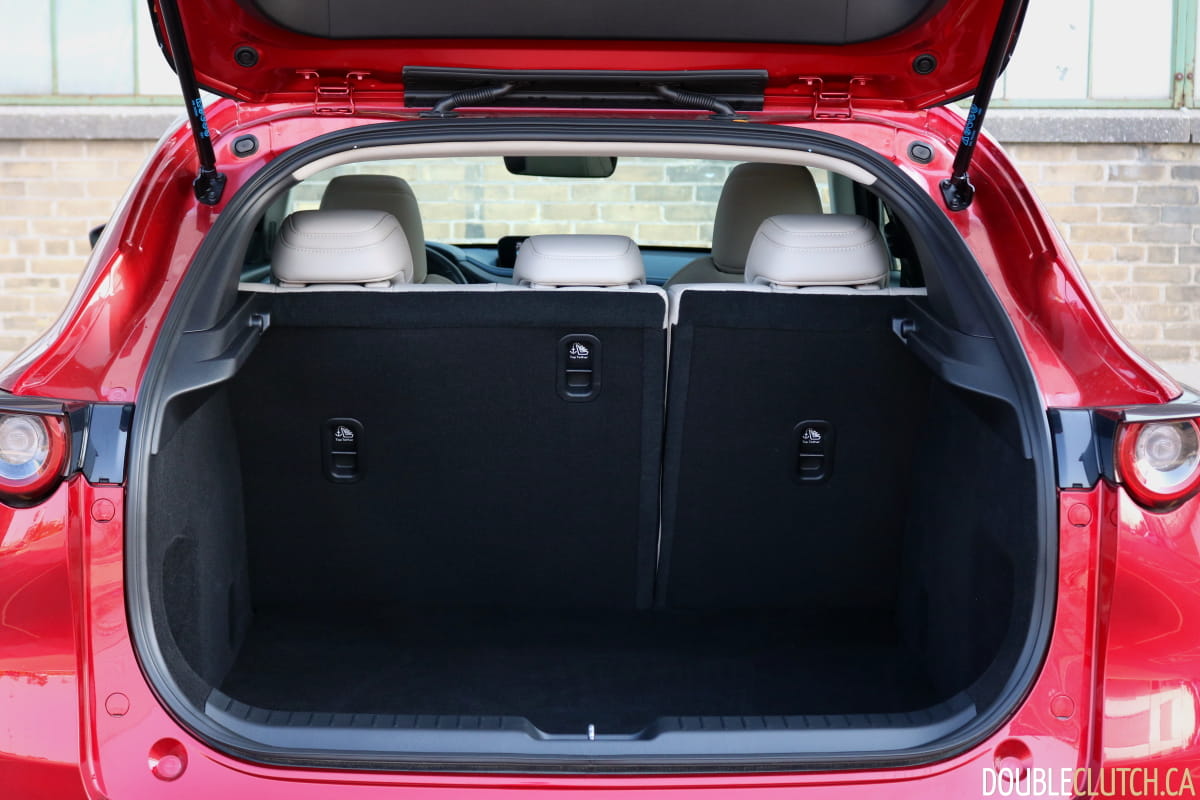From coupe crossovers to subcompact crossovers to convertible crossovers, it seems as if no niche has gone unexplored. The latest niche to be probed by automakers is crossovers sized somewhere between a true subcompact and a true compact. With Canada historically loving practical small cars, these right-sized utility vehicles should be a perfect fit for many consumers. The trouble is, many of them are a bit humdrum, but not this 2021 Mazda CX-30 GS AWD.
Lovely /ˈləvlē/ adjective: exquisitely beautiful. Upon first gaze, the CX-30 fits the description to a tee. Taut compound curves are the buzzword of the day, offering some intense play between light and shadow that’s further accentuated by the Soul Red Crystal paint, a $450 option that’s worth every penny. Mazda knows that having a long dash-to-axle ratio gives designs a sense of drama and motion, so it’s featured on every car they make. Along the side of the vehicle, the chrome window trim follows just the lower half of the greenhouse to accentuate the length and reduce the visual height of the CX-30.
Looking a bit further, elements like the thin lights, delicate mirrors and prominent chrome grille bezel reminiscent of a 1960s concept car continue to be lovely. There are no fake vents, floating D-pillars or other gimmicks to the CX-30’s design, a refreshing treat. Even better, there are no obvious whiffs of cheapness to trims that aren’t loaded. Even the base model GX gets alloy wheels and the mid-range GS here trim steps up to the same 18-inch wheels as the loaded GT, albeit in a lighter shade of silver. It seems that Mazda never got the memo that subcompact crossovers have to appear homely.
Stepping inside the CX-30 it becomes incredibly apparent that Mazda’s designers locked the accounting team in a broom closet and set about designing an interior for a $50,000 car. Extensive stitched materials, real metal, a blend of soft off-white, black and blue leatherette, all in a mid-range model. Perhaps more impressive still is the level of surfacing and sculpture. It’s less car, more modern art and it makes every other competitor’s interior feel quite plebeian. All five seats in the CX-30 are supple and supportive and the steering wheel’s leather is particularly soft.
Rear legroom, rear foot space and cargo space are particularly noteworthy as they allow the CX-30 to be a genuine small family-sized car. While our test car came equipped with a digital instrument cluster, Mazda believes that analogue is premium and thus offers minimal customization. While it would be nice to see what song is playing in the gauge cluster, it’s still a slick interface.
For infotainment, Mazda’s wisely decided to eschew touchscreens in favour of a lovely ceramic knob-based controller. There are four shortcut keys flanking the rotary knob for audio, navigation, back and home, and the volume and seek controls are combined into one knob just to the right of the main one. It’s all perfectly within reach and becomes absolute muscle memory within five minutes.
As for the screen itself, it’s an 8.8-inch unit that supports Apple CarPlay and Android Auto through a sleek interface. Unfortunately, the low-resolution 4:3 aspect ratio backup camera lets its high-tech demeanour down a bit. Still, eight standard speakers with a thirteen-band equalizer and rather good sound quality help make up for it. Set that equalizer just right and the stereo is absurdly clean for a base-spec system in a mainstream car.
Powering the CX-30 is Mazda’s familiar line of SkyActiv four-cylinder engines. Base GX models come with a 155-horsepower 2.0-litre four-cylinder engine while GS and GT models get a 2.5-litre four-cylinder making 186 horsepower and 186 lb-ft. of torque. The latter provides more thrust than many competitors and doles it out smoothly. A six-speed automatic is the only gearbox although buyers can choose between front and all-wheel-drive. Even in our all-wheel-drive 2.5-litre test car, fuel economy was rather good. After a week of city driving, our CX-30’s average stood at 9.5L/100km, splitting the difference between the city and combined ratings.
Pushing the envelope past everyday driving, a genuinely playful yet confident chassis reveals itself. Steering feel is predictably numb, although Mazda engineers are masters of chassis tuning and use little tricks like stiff steering rack bushings and a high degree of positive caster to tune in a faithful front end and cohesive rear suspension dynamics. The CX-30’s chassis is so confident that Mazda tuned the stability control threshold slightly on the loose end, allowing keen drivers to enjoy the occasional morsel of satisfying lift-throttle rotation without any threat of trouble.
Part of the magic is in Mazda’s G-Vectoring Control Plus cornering assist system. How does it work? Basically it pulls a little bit of power in response to steering input in order to shift the vehicle’s weight forward and give the front wheels more bite for steering, plus it’s able to brake individual outside wheels to provide increased stability out of corners. The result of all this technological wizardry is superb mid-corner adjustability for the CX-30’s class of vehicle, at least in most conditions.
The exception is approaching the apex of a decreasing-radius corner on throttle, where the limitations of torsion beam rear suspension become apparent and the electronics exhibit some weirdness. Feathering the throttle is absolutely key to getting the CX-30 to rotate through a corner in such conditions, although most drivers will never notice this behaviour and those who do will realize they need to drive it like an old Audi Quattro which is actually a bit brilliant.
What’s also brilliant is the body control and ride tuning. Taking a leaf from the Europeans, Mazda has employed compliant springs and dampers to create a ride that’s firm yet smooth. While the CX-30 may jostle cargo slightly more over rough city tarmac than competitors, it pays off on the freeway with a buttery-smooth yet impeccably-planted feel. The CX-30’s entire structure feels hewn from granite, a monument to solidity through measures such as the use of high-tensile steel in key areas and noise-reduction through measures such as moving the woofers out of the doors and into the footwells.
In short, the 2021 Mazda CX-30 GS AWD is possibly the best subcompact crossover on the market. A VVS diamond in a landscape of cubic zirconia, it’s a very nice car without the exorbitant price tag many very nice cars command. Our test car, a GS AWD with the luxury package and Soul Red Crystal paint, stickered at a reasonable $31,000 on the dot. That’s less than what a comparably-equipped Honda HR-V or Nissan Qashqai retails for and while it is more than what a Kia Seltos EX costs, the CX-30 is well worth the premium.

